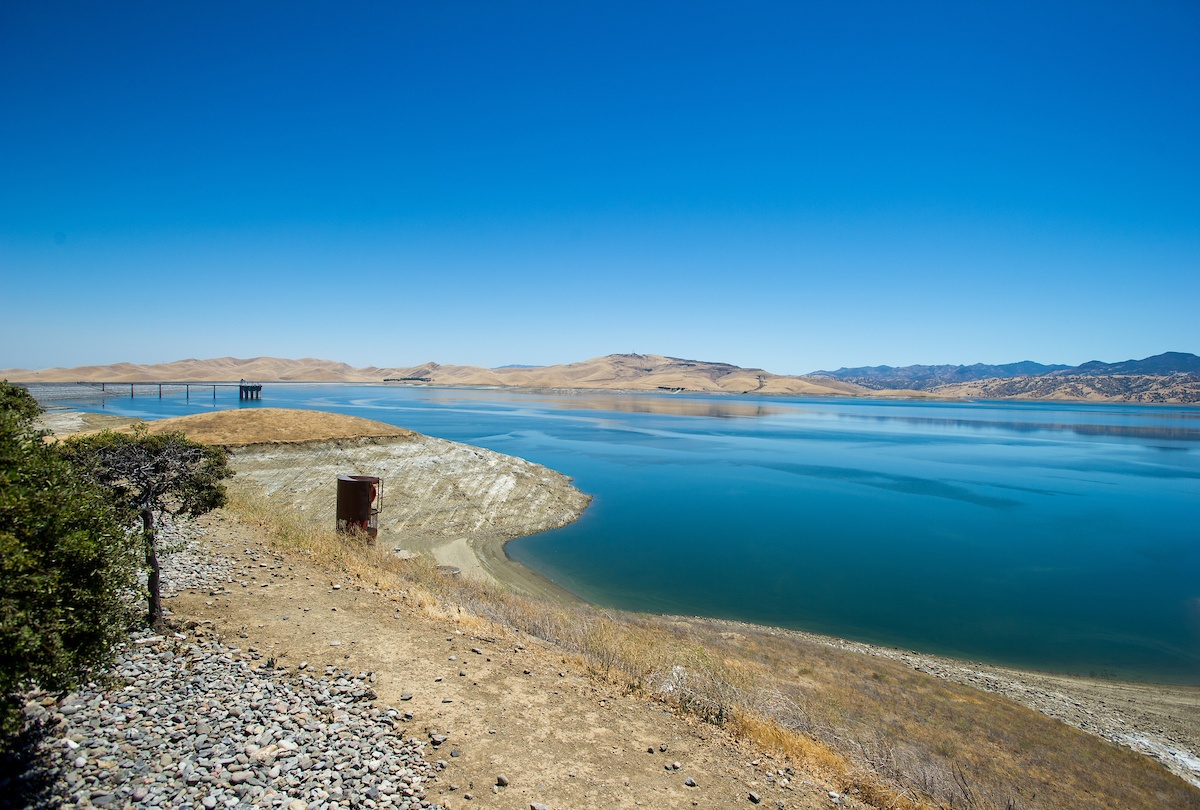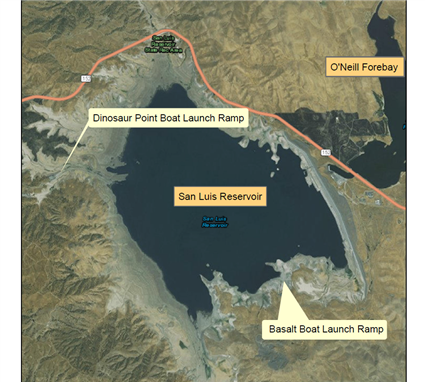San Luis Reservoir, located 12 miles west of the city of Los Banos, is part of the San Luis Joint-Use Complex, which serves the State Water Project and the federal Central Valley Project. DWR/2018
SACRAMENTO – Today, the Department of Water Resources (DWR) urged people to avoid physical contact with the water at San Luis Reservoir in Merced County until further notice due to blue-green algae (cyanobacteria).
Boating is allowed, but swimming and other water-contact recreation and sporting activities are not considered safe under a warning advisory due to potential adverse health effects. A caution level advisory had been in place at the reservoir since June 14. Today’s announcement upgrades that advisory to a warning. O’Neill Forebay remains free from algal bloom advisories.
Warning signs are posted at the Basalt Boat Launch and Dinosaur Point Boat Launch.
Water sampled on July 16 at San Luis Reservoir contained 6.65 micrograms per liter of microcystins, a level that prompts warning advisory signs to be posted at the reservoir.
The recommendation is based on the potential health risks from algal toxins. Toxic blue-green algae exposure can cause eye irritation, allergic skin rash, mouth ulcers, vomiting, diarrhea, and cold- and flu-like symptoms. Pets can be especially susceptible because they tend to drink while in the water and lick their fur afterwards.
Bloom conditions can change rapidly, and wind and waves may move or concentrate the bloom into different regions of the reservoir. The algal bloom can accumulate into mats, scum, or form foam at the surface and along the shoreline, and range in color from blue, green, white, or brown.

State guidelines on cyanobacteria and harmful algal blooms recommend the following precautions be taken in waters impacted by blue-green algae:
- Take care that pets and livestock do not drink the water, swim through algal blooms, scum, or mats, or lick their fur after going in the water. Rinse pets in clean water to remove algae from fur.
- Avoid wading, swimming, or jet or water skiing in water containing algae blooms, scum, or mats.
- Do not drink, cook, or wash dishes with untreated surface water from these areas under any circumstances. Common water purification techniques such as camping filters, tablets, and boiling do not remove toxins.
- Do not eat mussels or other bivalves collected from these areas. Limit or avoid eating fish. If fish are consumed, remove the guts and liver and rinse filets in clean drinking water.
- Get medical treatment immediately if you think that you, a family member, friend, pet, or livestock might have been poisoned by blue-green algae toxins. Be sure to alert medical professionals to the possible contact with blue-green algae. Also, make sure to contact the local county public health department.
For more information, visit:
- California Department of Public Health
- State Water Resources Control Board
- CA Office of Environmental Health Hazard Assessment
- US Environmental Protection Agency: CyanoHAB website
- Centers for Disease Control and Prevention
Contact:
Maggie Macias, Information Officer, Public Affairs, Department of Water Resources
(916) 653-8743 | maggie.macias@water.ca.gov
###
